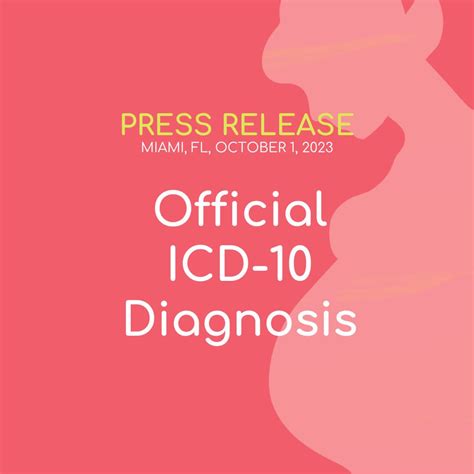Cholestasis, a condition characterized by a reduction or stoppage of bile flow, can pose significant challenges during pregnancy. Bile, a digestive fluid produced by the liver and stored in the gallbladder, plays a crucial role in the digestion and absorption of fats and fat-soluble vitamins. Intrahepatic cholestasis of pregnancy (ICP), the most common form of the condition during pregnancy, occurs when the flow of bile is slowed or blocked, leading to the accumulation of bile acids in the blood. This can cause severe itching, jaundice, and, in some cases, premature birth and fetal distress. Managing cholestasis during pregnancy is vital for the health of both the mother and the baby. Here are 10 tips for a healthy pregnancy when dealing with cholestasis:
Understanding Cholestasis in Pregnancy
Cholestasis of pregnancy typically presents in the third trimester, with the primary symptom being intense itching (pruritus) without a rash. The itching can be severe and debilitating, often worsening at night. It’s crucial for pregnant women experiencing such symptoms to seek medical attention promptly, as untreated cholestasis can increase the risk of complications, including premature birth, fetal distress, and stillbirth.
1. Seek Immediate Medical Attention
If you’re experiencing severe itching, it’s essential to consult your healthcare provider. Early diagnosis through blood tests to check liver function and bile acid levels can significantly improve the management of the condition. Your healthcare provider may recommend additional tests, such as an ultrasound, to rule out other liver conditions.
2. Medication for Symptom Relief
Medications like ursodeoxycholic acid (UDCA) are commonly prescribed to reduce bile acid levels and alleviate itching. It’s crucial to follow the prescribed dosage and discuss any concerns or side effects with your healthcare provider. Some women may also find relief from topical creams or oral antihistamines, although these are typically used in conjunction with UDCA.
3. Dietary Changes
While there is no specific diet that can cure cholestasis, making certain dietary adjustments may help manage symptoms. Increasing your intake of foods rich in fiber, such as whole grains, fruits, and vegetables, can help improve digestion. Additionally, ensuring you’re getting enough fat-soluble vitamins (A, D, E, and K) through your diet or supplements, under the guidance of your healthcare provider, is important due to the potential for malabsorption associated with cholestasis.
4. Stay Hydrated
Drinking plenty of water is essential for overall health, especially during pregnancy. Staying hydrated can help your body function better and may help reduce the severity of itching. Aim for at least eight glasses of water a day, and consider increasing your intake if you’re experiencing significant itching or if your healthcare provider recommends it.
5. Cooling Measures for Itch Relief
Applying cool compresses or taking cool baths can provide temporary relief from itching. Some women also find relief in using fans or air conditioners to keep their skin cool, as heat can exacerbate itching. Oatmeal baths are another popular remedy; colloidal oatmeal can help soothe the skin and reduce itching.
6. Avoid Tight Clothing
Wearing loose, comfortable clothing can help reduce irritation and alleviate itching. Avoid scratching, as this can lead to skin infections and further complications. If the itching is preventing you from sleeping, discuss this with your healthcare provider, as sleep is crucial for your health and the health of your baby.
7. Monitor Your Baby’s Health
Regular fetal monitoring is recommended for women with cholestasis, as the condition can increase the risk of fetal distress. Your healthcare provider may recommend more frequent prenatal visits and non-stress tests to monitor your baby’s well-being. It’s essential to attend all scheduled appointments and to notify your healthcare provider immediately if you notice any changes in your baby’s movement or if you have concerns about your baby’s health.
8. Consider Early Delivery
In some cases, your healthcare provider may recommend inducing labor or performing a cesarean delivery before your due date to reduce the risk of complications. The decision for early delivery is typically made on a case-by-case basis, considering the severity of your symptoms, the level of bile acids in your blood, and the gestational age of your baby.
9. Follow-Up Care
After delivery, it’s essential to follow up with your healthcare provider to ensure your bile acid levels return to normal. Most women find that their symptoms resolve shortly after giving birth. However, in rare cases, cholestasis can recur in future pregnancies or be a sign of an underlying liver condition, making ongoing care and monitoring important.
10. Seek Support
Living with cholestasis during pregnancy can be challenging, both physically and emotionally. Seeking support from family, friends, or support groups can help you cope with the condition. Don’t hesitate to reach out to your healthcare provider or a mental health professional if you’re feeling overwhelmed or struggling to manage your symptoms.
Conclusion
Cholestasis during pregnancy requires careful management to ensure the best possible outcomes for both mother and baby. By understanding the condition, following medical advice, and making necessary lifestyle adjustments, women with cholestasis can have a healthy pregnancy and minimize the risks associated with the condition. Remember, early intervention and regular monitoring are key to managing cholestasis effectively.
Frequently Asked Questions
What are the primary symptoms of cholestasis during pregnancy?
+The primary symptom of cholestasis during pregnancy is intense itching (pruritus) without a rash. This itching can be severe and is often worst at night.
How is cholestasis of pregnancy diagnosed?
+Diagnosis is typically made through a combination of clinical evaluation, blood tests to check liver function and bile acid levels, and possibly an ultrasound to rule out other liver conditions.
Can cholestasis during pregnancy increase the risk of complications?
+Yes, untreated cholestasis can increase the risk of premature birth, fetal distress, and stillbirth. Regular monitoring and management by a healthcare provider are crucial to minimize these risks.
How can I manage itching caused by cholestasis during pregnancy?
+Medications like ursodeoxycholic acid (UDCA) can help reduce bile acid levels and alleviate itching. Cool compresses, oatmeal baths, and avoiding tight clothing may also provide relief. Always consult with your healthcare provider before starting any new treatments.
Will I need to deliver my baby early if I have cholestasis?
+The decision for early delivery is made on a case-by-case basis, considering the severity of your symptoms and the health of your baby. Your healthcare provider will discuss the best approach for your specific situation.
Will cholestasis during pregnancy affect my future health or pregnancies?
+In most cases, cholestasis of pregnancy resolves after delivery, and future pregnancies are not typically affected. However, it can recur in future pregnancies, and in some women, it may be a sign of an underlying liver condition. Regular follow-up care with your healthcare provider is important.



